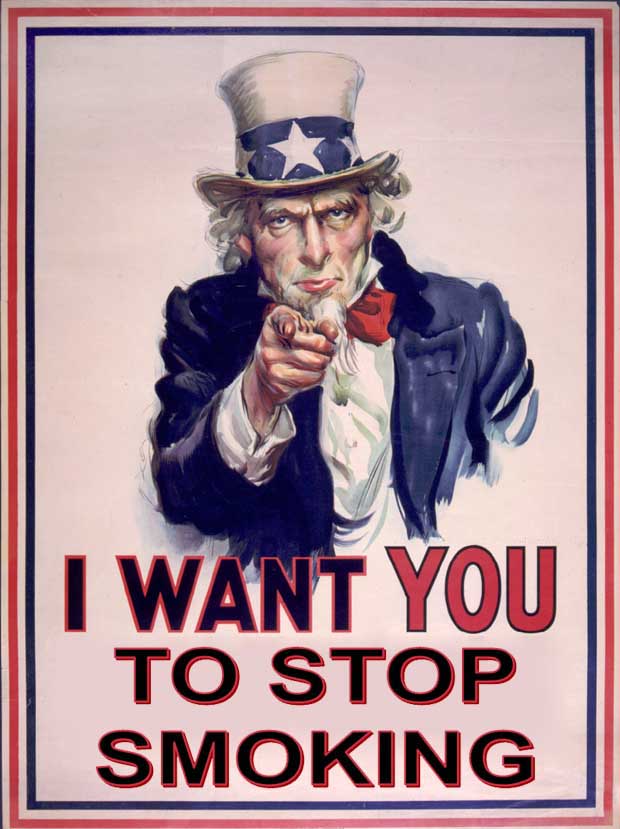Social engineering is a concept referring to attempts by the government or private interest groups that try to influence popular attitudes and social behavior on a large scale. A variety of different social engineering approaches have been attempted over the years to try to reduce the problem of smoking.
Age Limit:
In the United States, each state and many local regions have laws regarding smoking. In most states the age that a person can possess, use, and purchase tobacco is 18. No retailer is allowed to sell tobacco to someone under 18, and if the customer appears to be under this age the retailer must see a photographic ID as proof of age. Additionally, the legal age to purchase tobacco has been raised to 19 in Alabama, Alaska, New Jersey, Utah, and Nassau, Suffolk, and Onondaga counties in New York.
Research constantly finds that most people pick up the habit in their teens and that if they don’t pick it up by their 20s most likely they never will. The government has these laws in hopes of keeping cigarettes from people as long as possible so that they will hopefully never pick up the habit. The problem is that even if the teens can’t purchase the cigarettes for themselves they can find people who can get cigarettes for them, so the age limit is not completely effective.
Smoking Bans:
Many states in America have passed smoking bans that restrict tobacco use in workplaces and public spaces. The United States Constitution doesn’t allow Congress to regulate tobacco use, so each state is responsible for making its own rules and regulations for this issue and many states have done just that. Connecticut has a statewide smoking ban that prohibits smoking in almost all indoor public places and workplaces, including bars and restaurants, but not including existing areas of private clubs, cigar bars, correctional facilities, and public housing projects. New York has a statewide smoking ban in all workplaces, bars, restaurants, bowling alleys, pools halls and company cars, except Indian casinos and cigar bars.
States have set up the smoking bans for a variety of reasons. Secondhand smoke has been found to be very dangerous and has effects such as increased risk of heart disease, cancer, emphysema, and other chronic and acute diseases. Keeping smoke out of public areas would limit exposure to secondhand smoke for non-smokers and public workers. Less smoke and cigarette butts will allow for cleaner public areas, improved air quality, and lowered risk of fire. Not only this but less smoke will provide an environment that will make it easier for smokers to give up their habit. Smokers are not too happy about the smoking bans, but others have been very excited with the results they have seen so far. After 18 months of a smoking ban in Pueblo, Colorado, hospital admissions for heart attacks dropped 27%, whereas they remained the same in neighboring areas that did not have smoking bans. Similar findings have been found in other areas with smoking bans, so it seems that this method has been very effective so far.
For more information about each state’s smoking bans visit the following link:
Smoking Bans by state
Anti-smoking Groups:
Hundreds of interest groups around the country focus their attention on preventing people from smoking. Some of these groups are comprised of physicians and researchers while some are made up of ordinary people, but all are together in the fight against the tobacco industry. These groups include The Foundation for a Smokefree America, the American Lung Association, and the Campaign for Tobacco-Free Kids, among many others.
The largest and most effective anti-smoking campaign for youth is the American Legacy Foundation sponsored group theTruth.com, which focuses on keeping teens from smoking. This group uses both fear and humor-based messages to deliver facts and messages about tobacco and the marketing practices of the tobacco industry. The following is one of the campaign’s commercials that features a cowboy singing a song through a hole in his neck with the lyrics “You don’t always die from tobacco, sometimes you just lose a lung.” The purpose of this video, and others in the campaign, is to show teens the negative side effects of tobacco without specifically telling them not to smoke so that they will be able to make their own informed decision about whether to smoke or not.
Studies have shown that prior to the Truth campaign teens constantly overestimated the number of their peers who smoked, and this overestimation was linked to smoking uptake. When they were more exposed to the campaign they had a more accurate view of the numbers of smokers their age, which could be very beneficial in keeping them from smoking. Other studies have found that industry-sponsored anti-smoking advertisements (Seen Here) are not as effective and may actually have the opposite effect and increase the likelihood of smoking. In the Phillip Morris advertisement linked to above, the campaign portrays ideas consistent with teens' current expectations that less rebellious teens are less likely to smoke, so teens watching the ads are not really affected by them. On top of this the idea of telling them not to smoke makes many of them want to do it just to defy authority. Ad campaigns can be effective, but they need to be subtle in their approach and not try to force teens not to smoke or they will have an effect opposite to the one desired.
Sources:
Wikipedia: 1, 2, 3, 4
Study founded by American Legacy Foundation
American Journal of Public Health study
Author: Stephanie
Thursday, July 24, 2008
Subscribe to:
Post Comments (Atom)



No comments:
Post a Comment